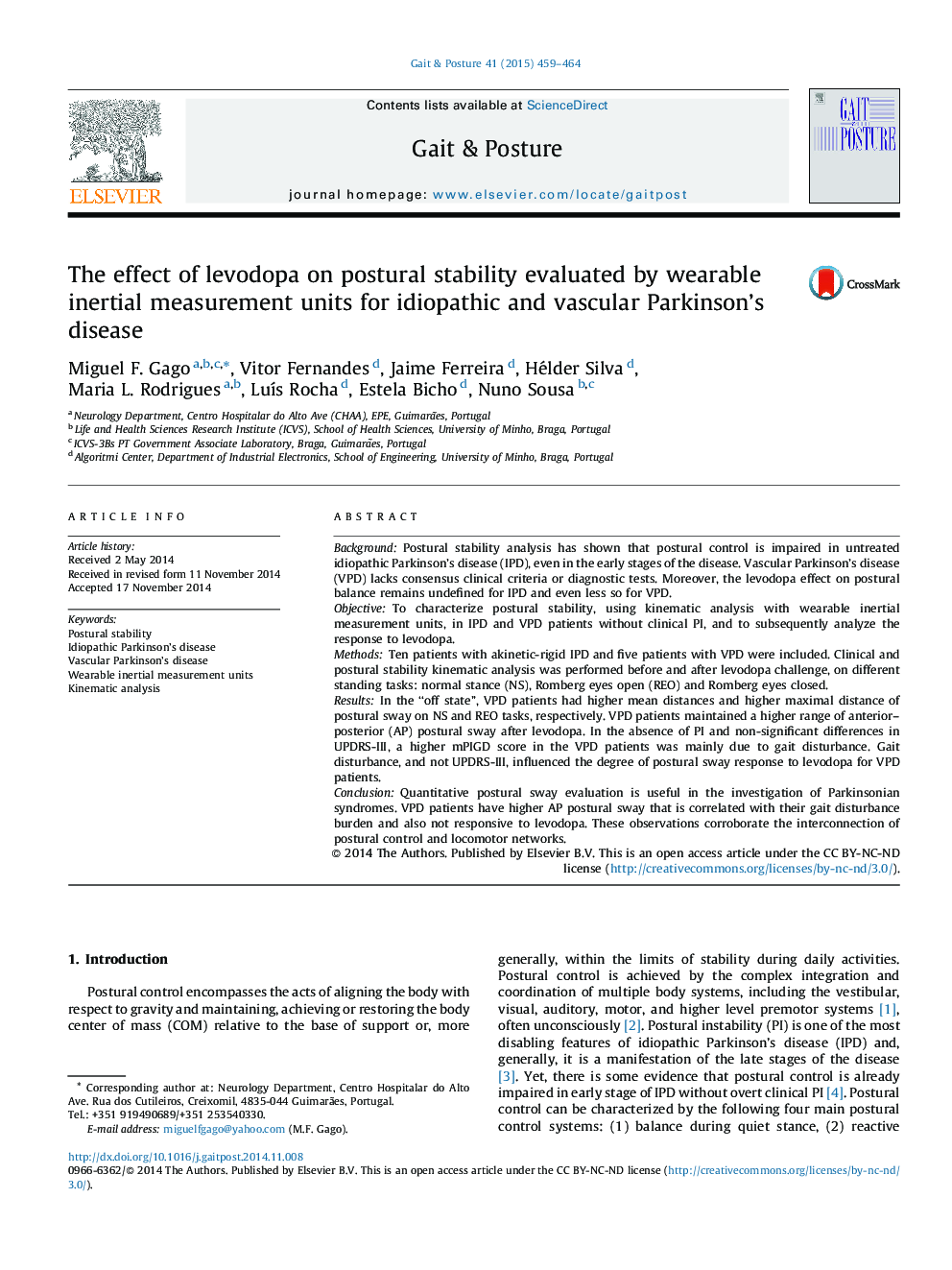| Article ID | Journal | Published Year | Pages | File Type |
|---|---|---|---|---|
| 6206104 | Gait & Posture | 2015 | 6 Pages |
BackgroundPostural stability analysis has shown that postural control is impaired in untreated idiopathic Parkinson's disease (IPD), even in the early stages of the disease. Vascular Parkinson's disease (VPD) lacks consensus clinical criteria or diagnostic tests. Moreover, the levodopa effect on postural balance remains undefined for IPD and even less so for VPD.ObjectiveTo characterize postural stability, using kinematic analysis with wearable inertial measurement units, in IPD and VPD patients without clinical PI, and to subsequently analyze the response to levodopa.MethodsTen patients with akinetic-rigid IPD and five patients with VPD were included. Clinical and postural stability kinematic analysis was performed before and after levodopa challenge, on different standing tasks: normal stance (NS), Romberg eyes open (REO) and Romberg eyes closed.ResultsIn the “off state”, VPD patients had higher mean distances and higher maximal distance of postural sway on NS and REO tasks, respectively. VPD patients maintained a higher range of anterior-posterior (AP) postural sway after levodopa. In the absence of PI and non-significant differences in UPDRS-III, a higher mPIGD score in the VPD patients was mainly due to gait disturbance. Gait disturbance, and not UPDRS-III, influenced the degree of postural sway response to levodopa for VPD patients.ConclusionQuantitative postural sway evaluation is useful in the investigation of Parkinsonian syndromes. VPD patients have higher AP postural sway that is correlated with their gait disturbance burden and also not responsive to levodopa. These observations corroborate the interconnection of postural control and locomotor networks.
